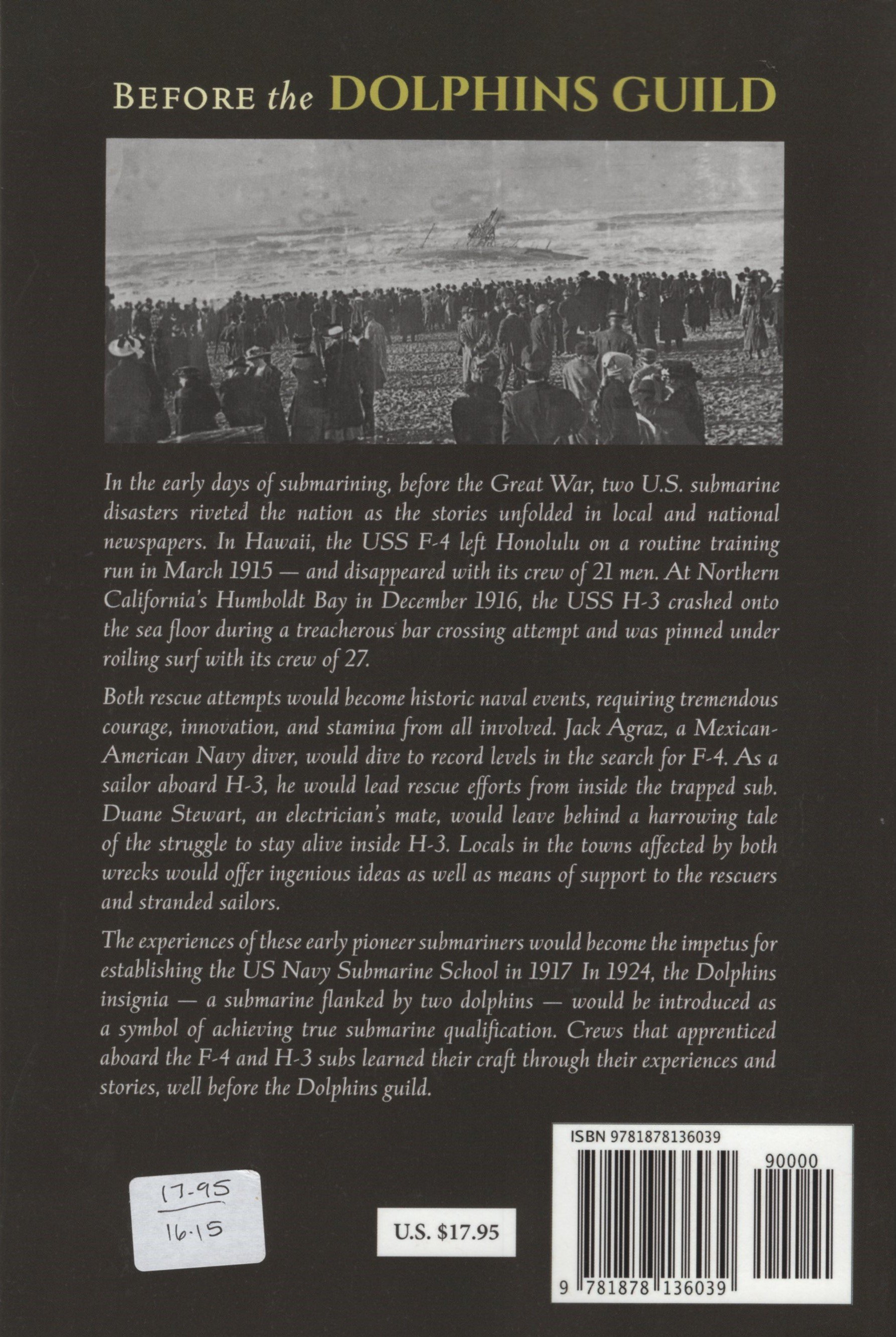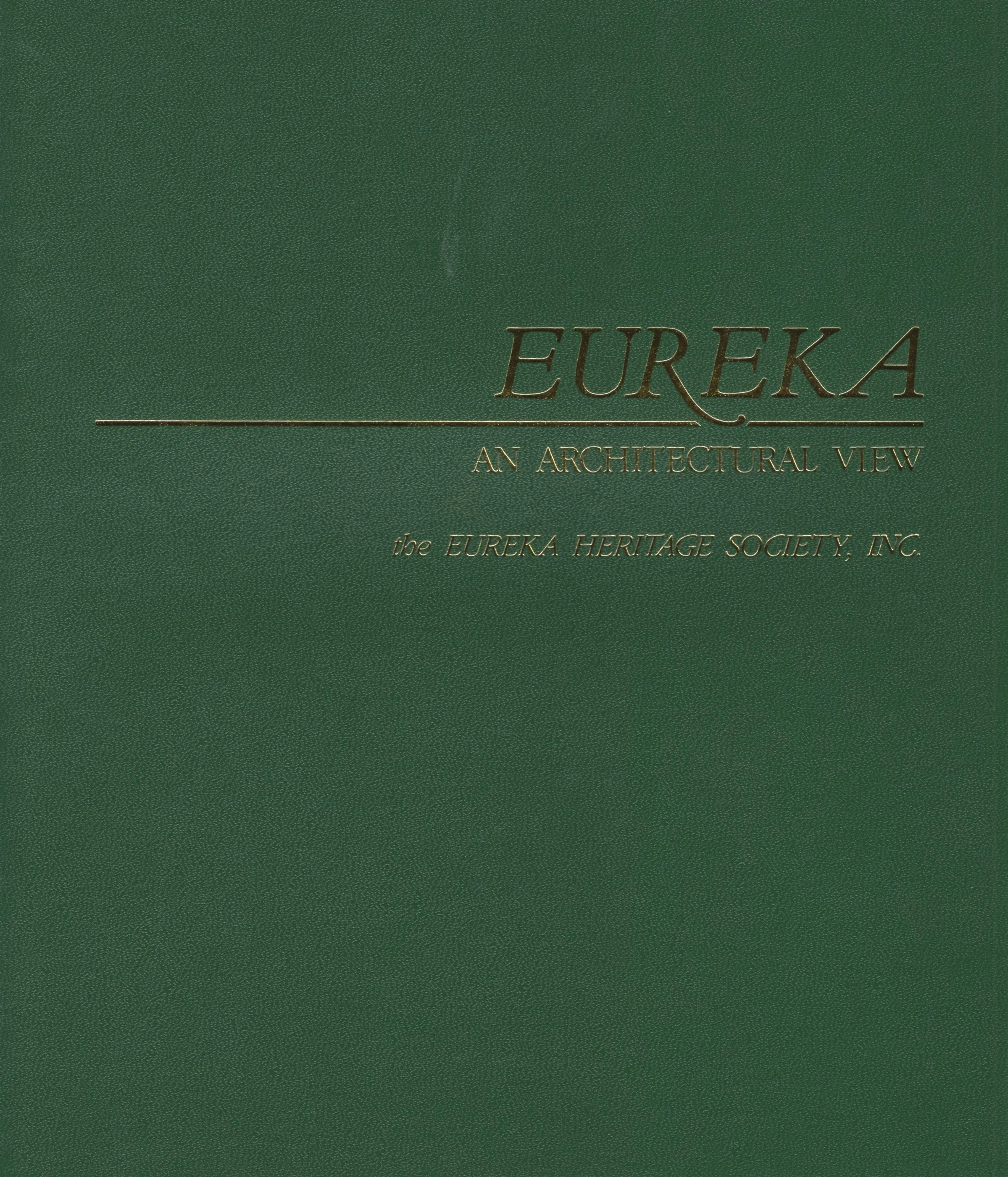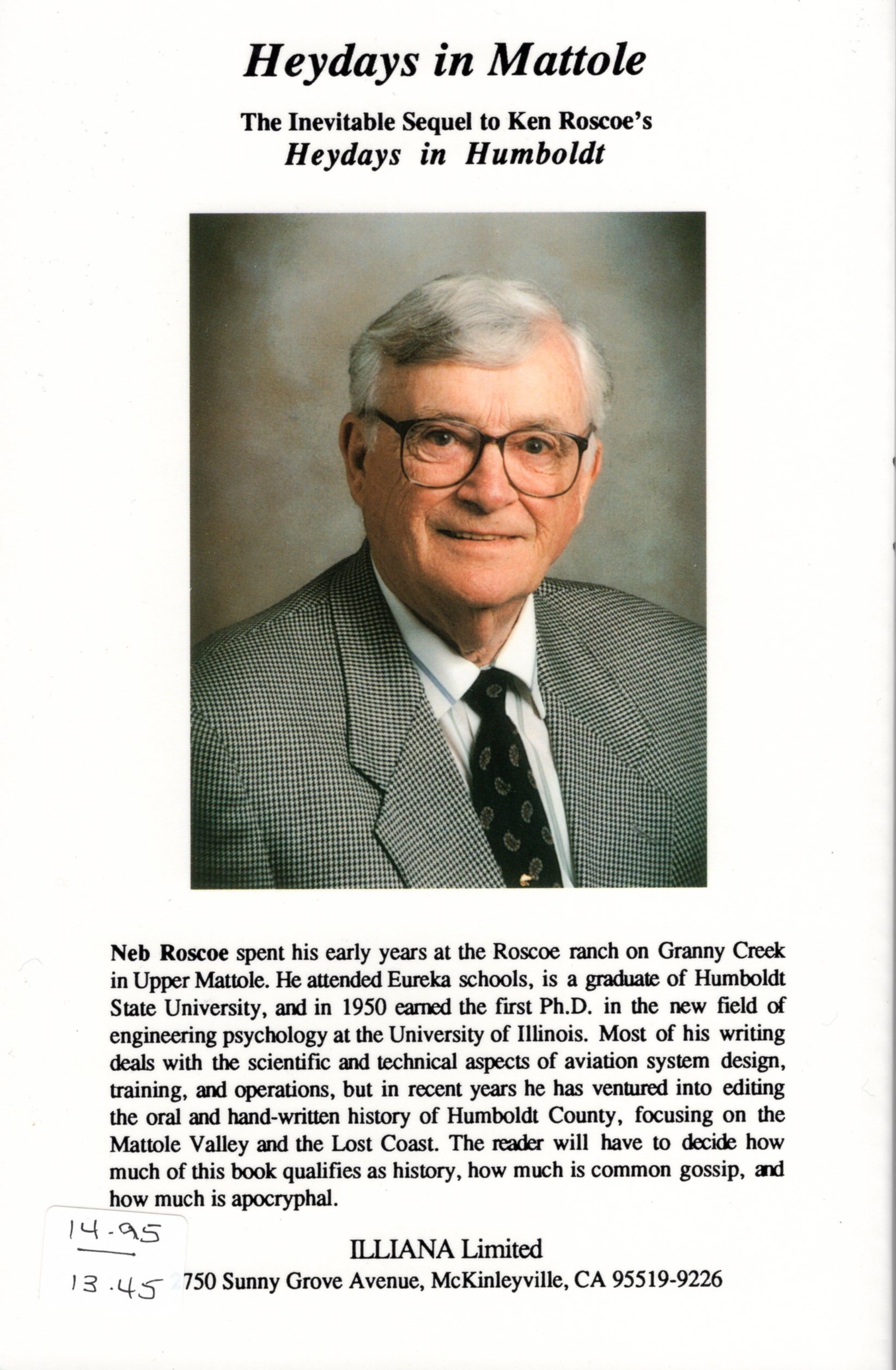Before the Dolphins Guild


Before the Dolphins Guild
Before the Dolphin's Guild, the title of a book for sale at the Historical Society bookstore, might be confusing at first since many people might not know what the Dolphin Guild was -- before or after. But the name of the author should make Humboldt readers give it another look -- Jon Humboldt Gates, a respected local historian.
Turns out the Dolphin Guild was a unit the U.S. navy established in 1924 to train sailors on the new technology of submarine operation and rescues. So what was "before"? Two spectacular submarine wrecks and the following rescue attempts demonstrating the need for such training.
March 1915 saw the disappearance of submarine F 4 off of Honolulu while December of the following year saw the H3 run ashore off Humboldt Bay's Samoa peninsula. To tie the stories even further together, the book tells us about two men with personal involvement in both.
Moving back and forth between the two events, the book is written with all the tension and drama of a disaster movie, but it is also written with historical and technological accuracy, and is supplemented with many historic photographs. Although Humboldt readers may be familiar with the local event, the book provides new details -- not only on the H3 but also on the subsequent wreck of the USS Milwaukee in the attempted rescue.
At the back, the book extensively list source materials including Navy records, newspaper accounts, and recorded first person interviews. The end matter also includes a useful glossary of naval terms and information about the individuals and ships involved.
Yes this book relates history, but not in a dry academic way. And for Humboldt readers it may strike a personal cord. A short drive to the Samoa peninsula at low tide can show how very present that history still is.







